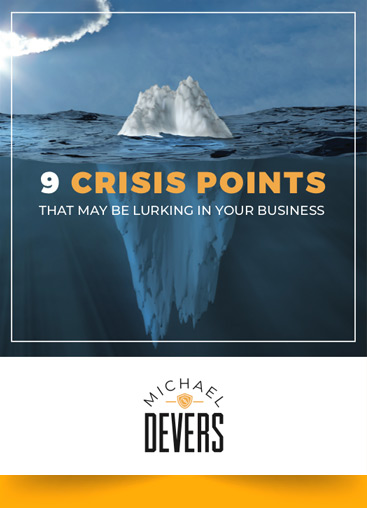In late February of 1946, Raytheon engineer Rod Spencer went to work with a peanut cluster bar in his pants. The snack was not for him. He liked to break the bar apart and feed it to the squirrels and chipmunks during his lunch break.
On this particular day, Spencer’s furry little friends went hungry. He was working on a military- grade magnetron when he realized the peanut cluster bar had melted in his pocket. Curious, Spencer grabbed an egg and placed it underneath the vacuum tube of the magnetron where it promptly exploded, covering the excited engineer in warm egg. The following day Spencer amazed his co-workers with history’s first batch of microwave popcorn. A new appliance had been invented, and a year later a $10-billion-dollar industry was launched.
Million dollar ideas probably cross paths with each of us on a regular basis. But there’s a reason not everyone is a millionaire. There’s a reason opportunity runs into us and never leaves a mark. In fact, I think there are three:
- Recognition
- Taking Action
- Seeing It Through
RECOGNITION:
The story that inspired this blog post comes from Bill Walsh’s The Score Takes Care of Itself. In it, Walsh gives the account of the first man to go in motion from his days as an assistant coach with the Cincinnati Bengals.
Tight End Bob Trumpy lined up on the wrong end of the line of scrimmage and, in trying to correct the mistake before the ball was snapped, moved over to the other side of the line. The move was legal, but never used, and the Bengals opponents on defense that day, the Oakland Raiders, went into a frenzy trying to figure out what to do. Three of the Raiders defenders actually collided with each other in the middle of the field during the chaos.
The next week while reviewing the game film, the Bengals organization got a good laugh at the play. All except offensive line coordinator Bill Johnson, who insisted the projectionist run the play over and over and over again. Finally, he stopped, turned to his team, and asked them, “Fellas, what would happen if we put Trumpy in motion intentionally and worked plays off it?”
Fifty men with the Raiders and fifty men with the Bengals had all watched the same play unfold. But only one man, Bill Johnson, saw a potential offensive revolution in Trumpy’s innocent mistake. The Bengals added it to their offensive schemes, confused defenses around the league, and before long every team in the NFL had added it to their playbooks as well.
How many times do we watch something happen right in front of us, and fail to recognize the kernel of brilliance in what we’ve observed? How many times are we Bill Johnson, and how many times are we one of the other 99 “fellas?”
TAKING ACTION:
Seeing the kernel of brilliance, the flash of insight, the hole that needs to be filled is not enough. For us to capitalize on it, we must take action.
I have a friend – we’ll call him Rob Kabob. For years after he bought his first iPhone, he told me about an idea he had call “Where My ‘Mote At?” His idea was to create little tags you could use to stick to things you frequently lost and those tags would link up with an app on your iPhone to help you find whatever you had lost, which in his case was frequently his car keys and tv remote (though he did also joke about putting one on his wife). I encouraged him that it was a great idea (not the wife part) and something he should pursue. He also thought it was a great idea and something he should pursue.
Fast-forward another 5 years and as I walked through a Best Buy, I noticed a new product: little tags you could put on things you frequently lost and those tags would link up with an app on your iPhone. Being the considerate friend that I am, I immediately took a picture and texted it to my friend, Rob Kabob. To his credit, he was excited. “See, I told you it was a great idea!”
Who knows what would have happened if Rob had acted on his idea when he first had it. Maybe the technology wouldn’t have been ready, maybe he wouldn’t have been able to find the right manufacturing partner, or been able to secure the proper capital. If he had taken action, there’s no guarantee it would have been successful. In fact, the only guarantee is the outcome from not taking action. That end result is pre-ordained.
SEEING IT THROUGH:
Even if you recognize a million-dollar idea, and even if you take action on it, there is still a major point where people who make it this far sometimes fail. I call it, “When it Gets Hard.” Author and marketing guru Seth Godin calls it, “the Dip.” In Joseph Campbell’s storytelling archetype, The Hero’s Journey, he calls it “The Supreme Ordeal.”
In 1952, Florence Chadwick, the first woman to swim the English Channel both ways, set her sights on the Pacific Coast of the U.S. and swimming the 22 miles between Catalina Island and the California coast. The morning she attempted it, the fog was thick and the water was cold. Fifteen hours into the swim, she signaled to the boat accompanying her to pull her in. Her mother was in the boat and urged her to keep swimming. Shortly afterwards, exhausted from the effort, Chadwick relented and was assisted into the boat. Once on board she learned she gave up only a half-mile away from the shore. Asked about it the next day, she replied, “All I could see was the fog….. if I could have seen the shore, I would have made it.”
This is the Dip, the Supreme Ordeal. This is where it gets hard. Unfortunately, this is where many people quit. Like Florence Chadwick, the fog of uncertainty is too dense and they can’t see that the end result is so close they could almost touch it.
It’s in this very moment where you must redouble your efforts, dig deep, and push hard during that last half-mile of the journey. You may be emotionally spent, shivering, and physically exhausted, but keep swimming for the shore. Once you make it, we’ll have a big bowl of hot, buttery, microwave popcorn waiting for you.




0 Comments